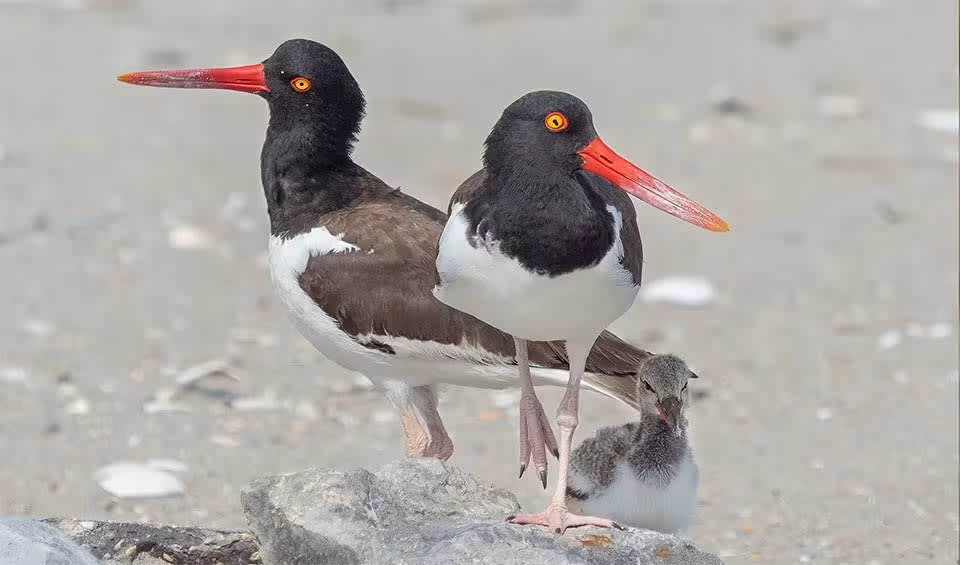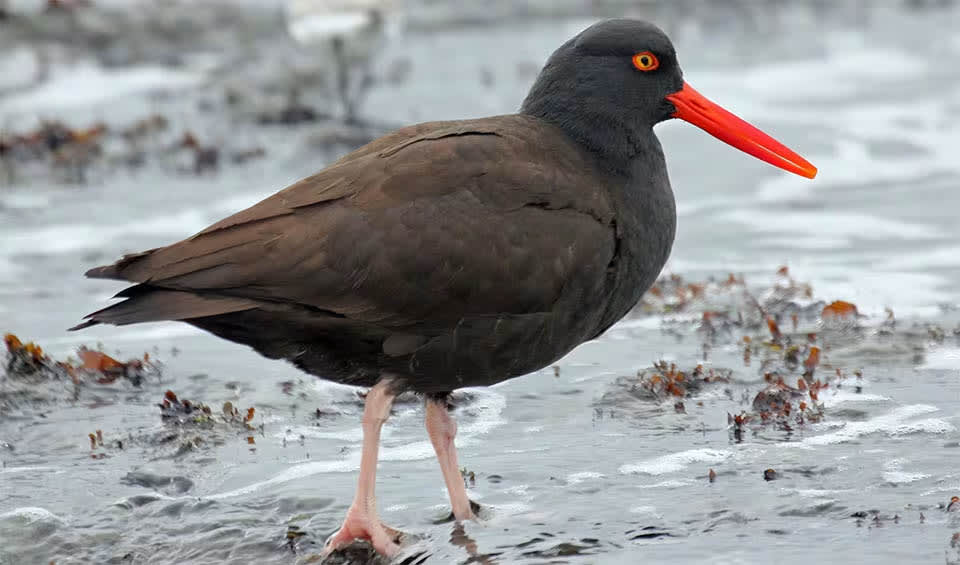Haematopus – Oystercatchers
The family with a very muddy taxonomic history
Oystercatchers are indeed a fascinating and unique group of wading birds that command attention with their striking appearance and specialized feeding habits. These birds are robust, with strong legs and distinctive long, bright orange-red bills, which they use skillfully to pry open mollusks, their primary food source.
Found on coastlines around the world, except for the high Arctic, the extreme Antarctic, and some tropical regions of Africa and Southeast Asia, oystercatchers are almost exclusively shorebirds. However, some species, like the Eurasian oystercatcher and the South Island oystercatcher in New Zealand, exhibit unusual behavior by also breeding inland, often along the banks of rivers and lakes, which may be quite distant from the sea.
These birds are highly adaptable and can be found along various types of shorelines, from the rocky outcrops where they deftly wield their bills to dislodge limpets and other sessile creatures to sandy and pebbly beaches where they hunt for cockles and mussels. They have also been observed using their bills to dig for worms and other invertebrates in softer substrates.
Oystercatchers are monogamous, often forming long-term pair bonds. Their courtship rituals are elaborate and involve mutual preening, bill-touching, and loud, piping calls that can be heard over long distances. The nests are simple scrapes in the ground, and both parents are involved in incubation and chick-rearing.
The conservation status of oystercatchers varies with species and location. Some populations are stable or even increasing, while others face threats from habitat loss due to coastal development, human disturbance, and reduced prey availability due to overfishing and pollution.
Species in this genus
Eurasian oystercatcher
The masters of catching oysters, clams, and cockles
Black oystercatcher
Don’t let their name fool you; they actually prefer to eat mussels and limpets rather than oysters!



